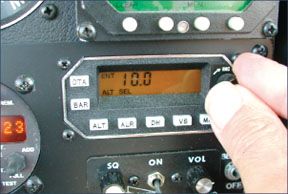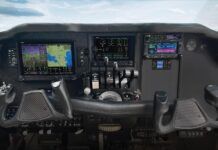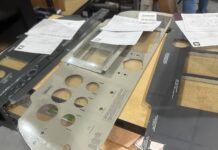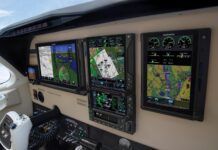Clearly, the most expensive upgrade to an airframe is the retrofit of a new autopilot. While many new autopilots will precisely fly the airplane from wheels up to the landing flare, their costs could exceed the value of the airframe. Still, we cant think of many upgrades that more enhance safety, airframe value and utility.
Modern autopilots compliment the capabilities of nav management systems such as Garmins gold standard 430/530 series. They’ll fly GPS flight plans in the horizontal and vertical, climbing, descending and leveling the airplane and some even fly oval tracks in holding, all while providing voice prompts to keep the pilot in the loop. No surprise that such automation isnt cheap.
But repairing older systems doesn’t come cheap either and the line needs to be drawn on whether to nurse along an old autopilot or rip it out in favor of a new model. In this article, well examine the current popular market offerings in autopilot and flight control systems for light airplanes. The choices are relatively few, based on STC approvals, except when shopping the Meggitt/S-TEC line, which seems to have an autopilot for every aircraft model.
Gyro’s The Thing
The driving goal for autopilots is to fly the airplane better than the pilot can-no altitude excursions, no wandering off the approach centerline and no heading bobbles, all while keeping the passengers out of the barf bags. To do this, an autopilot needs an attitude reference and this is generated by a gyroscope, or more recently, through solid-state electronics.
Autopilots should be considered stability control systems since they correct the flight path when the airplane departs from it, say in turbulent air or due to transient mistrim. An attitude-based autopilot receives its roll and pitch reference signal from the attitude gyro, while a rate-based autopilot listens to a rate gyro inside a turn coordinator. As one would expect, the attitude gyro often offers a more precise reference that results in a smoother ride, as long the gyro stays healthy.
Which type is better for commanding an autopilot? Based on our experience, most small airframes are well matched to a rate-based system while heavier, higher-performance airplanes are better off with an attitude system, especially when flying at higher speeds. Rate-based autopilots have one big advantage over attitude-based autopilots: Theyre usually cheaper to buy and install. Still, on any airframe, regardless of the attitude reference source, an autopilots performance is directly proportional to control cable tensions and other interface considerations. As manufacturers insist, a flight control system installation is not work for amateurs because its airframe and avionics intensive and can require precise tuning and alignment through flight testing, which can include scary levels of risk. The final test for one autopilot is to rapidly descend the aircraft from altitude to check differences in control cable temperatures. We recall the wings-and the occupants-of a Malibu shaking during one such descent, with its airspeed needle nudging the red line.
Honeywell/Bendix King
The entry level Bendix/King KAP140 is standard equipment on new aircraft including the Cessna singles, but can only be retrofitted to a few aircraft models, with an STC in place for the Piper PA28-181. The digital KAP140 is rate based and comes in three types: single-axis roll only, dual-axis roll and pitch and dual-axis with altitude preselect using the KEA130A encoding altimeter. Automatic electric elevator pitch trim is an option, too.
Driven by the turn coordinator, the KAP140s we have flown perform well and overall reliability is good based on our feedback from long-term owners. The controller/computer mounts in the avionics stack and has good ergonomics, in the Bendix/King tradition. While there were some growing pains early on for the KAP140 in the Cessna single-engine models-the KAP140 launch application-service mods and product enhancements have fine-tuned this autopilot into a decent performing product at a reasonable price.But there are simply too few airplanes covered under the KAP140 STC to make it a player, hence its specs are not detailed on our summary chart on page 5.
Bendix/Kings flagship light aircraft autopilot is the all-digital KFC225, which replaced the popular analog KFC200 several years ago. It’s a full-featured system with altitude preselect/alerting and automatic pitch trim.About the only available option on a KFC225 that it doesn’t already have is a yaw damper.
In fact, the KCS55A remote compass system with HSI serves as an integral part of the KFC225 and is encompassed within the STC. In other words, if you want to retrofit a KFC225, youll need to install the KCS55A, making this the priciest autopilot out there.
For the money, the KFC225 system is a precise and automated performer, taking its roll and pitch reference from the KI256 flight director gyro.Honeywell has always shined brightly in flight control systems for jets and the KFC225 is trickle-down technology utilizing digital circuitry even in its servo motors. It has the now-popular digital roll steering for interface with ARINC-equipped GPS navigators such as the GNS430 and 530 and GNS480.
Borrowing from big-airplane mentality is the audio voice call-out and audible warnings, providing jet-like automation for the little guy. Callouts include things like, check pitch trim when appropriate or autopilot when the system is disengaged, plus to go callouts when in altitude preselect.
From a maintenance point of view, with its digital architecture, the KFC225s troubleshooting capabilities stand above any autopilot in this group with a diagnostics fault log thats accessed by connecting a PC to the systems dataport. When something breaks, this reduces troubleshooting time and the repair invoice that goes along with it. We recall troubleshooting a faulty pitch trim servo in a matter of minutes in a new Mooney Ovation, simply by studying the stored fault log.
The KFC225 has a radar altimeter input and allows the system, through reference of radar altitude, to fine tune the gain when you’re flying a coupled ILS. Honeywell calls this gain scheduling and its how many big airplane autopilots fly. After all, who wants an autopilot to blow through the localizer course or fall behind when tracking the glide-slope? Not us.
We’ve flown the KFC225 in a variety of aircraft-from newer Mooneys, where the system is standard equipment, to Cessna Grand Caravans. The KFC225 performs well in all of these, in our view. Honeywell technical support is no less than outstanding, with industry veterans manning the tech support phones at the factory in Kansas. Its refreshing to have such help available when a shop is stressed out with an autopilot AOG.
MEGGITT/S-TEC
A few years ago, not long after it merged with Meggitt, S-TEC boldly trimmed its dealer network, causing a stir and some resentment from shops and owners. S-TEC claimed that the shops stripped of their dealerships were ones that were mainly inactive in installing and troubleshooting S-TEC products.These shops, said S-TEC, lacked the test equipment and liability insurance to flight test systems for troubleshooting. Frankly, we cant see how an otherwise established shop cant turn high S-TEC sales numbers, with the variety of systems and a model-rich list of approved STCs. The price structure is decent, too, especially for systems appropriate for lower-end airplanes.
The single-axis System 40 and dual-axis System 50 are veteran players in the S-TEC line and while still offered, they have evolved into the single-axis System 20 and dual-axis System 30. Would-be buyers are often confused by the differences in these systems, but its easy, really. The 40 and 50 use the standard S-TEC turn coordinator, plus an additional control console, for selecting autopilot operating modes. The 20 and 30 systems utilize a turn coordinator that serves as a mode controller and roll computer, too, eliminating the need for a separate control console.
While the systems are priced similarly, some buyers incorrectly think that a dual-axis System 30 is less expensive to install than a dual-axis 50, since theres no console to mount. But its a wash because the System 30, unlike the 50, has a remote pitch computer that must be mounted someplace in the airframe. The System 50 has the pitch computer built into the mode controller.
In either case, the 20 through 50 series-and the entire S-TEC line-use the same servos and can support a heading command option. These entry level systems with altitude hold wont support automatic electric pitch trim, however, just trim prompting, which advises the pilot through annunciators when to feed appropriate trim. But in our estimation, the System 30 and 50 are tailored for lighter airframes that should be easy to fly without the need for automatic pitch trim, quite the contrary according to Chelton.
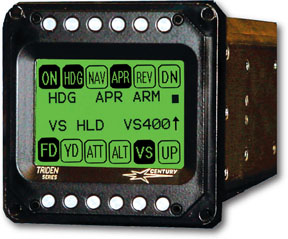
The 20 through 50 series systems wont support glideslope capture, either, but will track nav, GPS, localizer and, of course, take commands from the GPSS steering module. What most people care about is holding altitude, something the 30 and 50 will do nicely. Reference for maintaining altitude is obtained through an air pressure transducer plumbed into the aircraft static system, sending a signal to the pitch computer, which measures acceleration. The result is that the 30 and 50 are good performing dual-axis systems without pricey options to drive the invoice up.
If you want glideslope capture and autotrim, plus vertical speed command and the option for altitude alerter/preselect, your choice is either the flagship and radio rack-mounted System 55X or the instrument hole-mounted System 60-2 or higher-end System 65, for bigger airplanes. The 60-2 came first in the higher-end S-TEC product evolution, with its ARINC-style mode controller that mounts in a 3-inch instrument cutout, plus it uses remote roll and pitch computers and the familiar altitude hold transducer.
Recently, S-TEC introduced a new altitude preselect/alerter system with encoding altimeter. Unlike its quirky predecessor-the $3670 ST-360 alerter still in the line-the new SA-200 preselect with encoding altimeter is a joy to program and has comforting voice callouts, telling you where the airplane is and where its going in the vertical. It takes small-airplane automation to a higher level and comes at a $7560 premium.
A stand-alone yaw damper system is available and like the roll and pitch systems in the S-Tec line, it enjoys a long list of applicable STC approvals.Speaking of stand-alone, the Pitch Stabilization System (PSS) and 30ALT are stand-alone altitude-hold systems that are independent of an existing roll autopilot of any brand.
Using a remote pitch computer, pressure transducer and pitch servo, the PSS has glideslope capture and vertical speed command, adding a good deal of pitch capability to an airplane not otherwise equipped. It even supports autotrim. The 30ALT is a no-frills stand-alone pitch system, with trim prompting and basic controls that take little panel space.
When looking at the long list of autopilot gear in the S-TEC line, it’s easy to see why the company has earned top-of-the-hill status in the autopilot market.
Century Flight Systems
Century started out as Edo Aire/Mitchell in the early 1960s. In fact, the AirBoy was the first of such Edo autopilots installed in a Bonanza in the 1950s. Known for enduring designs, Century systems are found in many airplanes under various names.
Despite claims to the contrary, the rate-gyro based single-axis, electrically driven Century I wing leveler is still offered by Century but we cant remember the last time one went into a new installation.
It was popular gear in new airplanes years ago and still remains in some old airplanes, often inoperative. Older systems did not have nav tracking boards, but new ones do. The Century I can be installed in a 3-inch instrument hole as an electric back-up to an existing autopilot and has VOR/LOC/GPS tracking. Although low on the popularity list, for simple airplanes, its a basic wing leveler that also serves as a slip/skid indicator, too.
The attitude-based Century 2000 system comes in many flavors, from a basic single-axis system with trim prompting to three-axis with autotrim, altitude preselect, flight director and HSI. Much like the S-TEC products, a Century 2000 can start life as a single-axis system and can be built into a full three-axis system. The biggest obstacle with the Century 2000 is the deep design of its control console. In a world where panel space runs scarce, the 2000 is just too big for some applications.
But it performs well, even if it requires a fair amount of effort to tweak it to fly as designed. As with any attitude-based system, the gyros for the Century 2000 can be a pricey proposition to replace, commanding a princely sum for zero-time, high quality overhauls. The Century 2000 shines bright when flying precision approaches where the system will grab the localizer from almost 180 degrees intercept-when using the NSD360A HIS-and can nail the glideslope from above or below it, a rare trick as many other autopilots are picky about capture.
The Century 41 is similar in concept but differs in control and annunciator design. It’s designed for bigger airplanes-higher-end piston twins all the way to heavy turboprops. In Century design tradition, the 41 uses remote boxes, which can make the troubleshooting chase more complicated. But when they’re on their game, they do a fine job of flying big airplanes with precision, plus they’re compatible with some big-airplane EFIS systems. Standard, of course, is automatic pitch trim, a necessity in heavy airplanes.
The Triden series is Century’s most modern effort at digital flight control and while it was introduced several years ago, it still remains the company flagship product with a handful of applicable STCs in place. The 3-inch ATI-mounted controller/computer comes standard as a dual-axis system, including full nav coupling, trim prompting, voice prompting, vertical speed select and support for a flight director and yaw damping. All of its modes are displayed on an integral backlit LCD. We like its ergonomics and in the world of autopilot button pushing, this ranks high on the list of desirable features. We would like to see the Triden evolve more than it has and we have to wonder if, for lack of marketing effort, the Triden seems forgotten.
Chelton
We covered the all-digital Chelton AP-3C in detail in the July 2005 issue of Aviation Consumer and as the company suggested, the product moves toward maturity with more STCs in place and more experience flying different models. We’ve heard recently that the AP-3C is making some single-engine Cessna airframes porpoise and in pitch-heavy airplanes, such as Cessna 210s and 206s, were not surprised. S-TEC overcame similar obstacles with some of their systems in these airframes.
The AP-3C is bold in the sense that it flies the pitch axis strictly by trim, with a trim servo only. There’s no pitch servo at all. We like the removable capstan design, making maintenance a bit easier and we like the digital input capability, too. We think that a liberal interface potential with AHRS systems is smart and will be a necessity in the future.
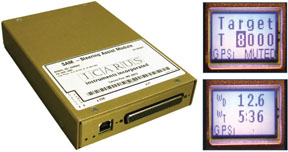
The AP-3C is attitude based and plays with most popular steam gauges and with AHRS through digital ARINC. The controller console fits into the radio stack or pedestal and has voice prompting and a decent display with straightforward logic. As more STCs are awarded in the coming year, it will be interesting to see how the AP-3C flies bigger airplanes, with just a roll and trim servo.
Conclusion
By technical design, one autopilot brand and model can’t be right for every airplane, otherwise there would be an STC for every system in every model.Autopilot manufacturers have a huge task in setting appropriate amounts of computer gain and designing servos that drive a wide variety of airframes.Simply put, some systems fly some airframes better than others.
S-TEC has proven that they are the leader in STC approvals and they’ve demonstrated to the FAA and to the market that they know flight control systems. Their rate-based autopilots remain fresh as S-TEC engineers continue to fine tune these systems to fly even the most difficult airframes with precision and at reasonable price points, in our view. Shops like to support them because compared to some of the Century equipment, theyre simply more straightforward. And S-TEC has its sights on the future, with new models focused on glass cockpits.
So our top-value pick is anything in the S-TEC line. For the best ride, the Bendix/King KFC225 wins hands down, but its approval list is short and its too expensive for most buyers. We like the Chelton for its simple design and minimal components. But as a company, Chelton isn’t as far along on the developmental path-especially for product support-as S-TEC is.
Contacts
Bendix/King, 877-712-2386, www3.bendixking.com
Chelton Flight Systems, 208-389-9959, www.cheltonflightsystems.com
Garmin International, 800-800-1020, www.garmin.com
Century Flight Systems, 940-325-2517, www.centuryflight.com
MEGGITT/S-TEC, 800-872-7832, www.s-tec.com
Icarus Instruments, 301-891-0600, www.icarusinstruments.com

